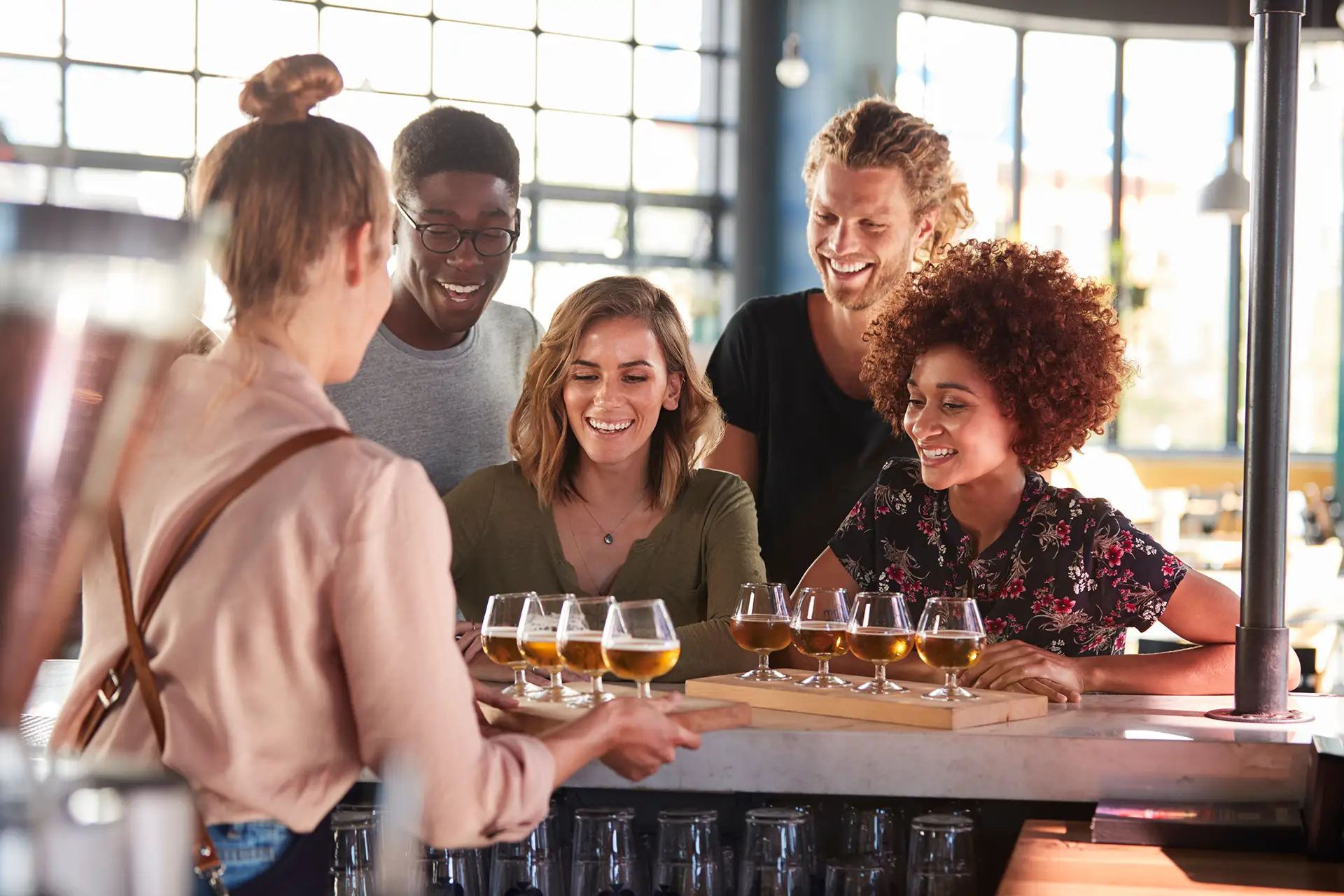In today’s world, nearly anything can be delivered directly to our front doorsteps. With a few clicks of a button, groceries, household items, furniture, prescriptions, and electronics are shipped straight to customers via e-commerce platforms. Beginning in 2020, COVID-19 lockdowns gave rise to huge surges in online ordering and delivery services, as people searched for ways to stock their homes without needing to travel beyond their front doors. As consumer demand has increased, alcoholic beverage companies have also jumped on the direct-to-consumer opportunity. In 2024—thanks largely to the advocacy of organizations like the NYS Distillers Guild—legislation allowing New York’s spirits, mead, and cider manufacturers to ship products directly to customers was passed, significantly expanding opportunities and markets for the state’s craft beverage producers.
Let’s explore some of the details of direct-to-consumer (DTC) shipping for alcoholic beverage producers in New York, as well as some of the regulations producers must follow when engaging in DTC sales.
Background of DTC Shipping in New York
Though New York wineries have been allowed to partake in DTC sales for several years now, the opportunity was not available to other alcoholic beverage manufacturers prior to COVID-19. As a way of supporting craft beverage producers during the pandemic lockdowns, New York temporarily expanded direct-to-consumer shipping privileges to the cider, mead, and spirits industries. In November 2024, New York enacted legislation permanently allowing these producers to ship products to consumers in New York State. As of November, New York manufacturers can ship “up to 36 cases (no more than 9 liters per case) of wine, distilled spirits, cider, mead, and braggot per year directly to a New York resident for personal use” (New York State Liquor Authority).
Benefits of the DTC Model
Since the pandemic, direct-to-consumer models have continued to grow in popularity as more and more people seek convenience through online ordering. Many people today would rather order alcohol directly to their doors than make a stop at the liquor store. As such, the demand for DTC alcohol has increased significantly. This creates the potential for growth for many of New York’s alcoholic beverage manufacturers. One of the main benefits of direct-to-consumer (DTC) shipping is the ability to bypass retail distribution models. By skipping the middleman and selling directly to customers online, producers can reach a wider range of audiences and expand profits through new revenue streams.
Another potential benefit of the DTC model is the opportunity to form deeper connections with customers and create personalized customer experiences. E-commerce platforms allow for increased customer engagement and also enable sellers to collect valuable data. This data can then be used to create customized shopping experiences for buyers, tailored to their individual needs and preferences. Customer data can also offer insights into consumer trends and behaviors, information that can help guide business decisions.
Regulations and Requirements
It’s important that manufacturers of alcoholic beverages are aware of the legal requirements surrounding direct-to-consumer shipping in New York State. For a complete list of requirements, see the New York State Liquor Authority website. Some of the requirements for manufacturers shipping alcoholic beverages in New York State include:
- Manufacturers must require buyers to provide proof they are at least 21, and that the alcohol is for personal use (not resale).
- Shipping containers used to deliver alcohol must be conspicuously labeled using specific text provided by the NYS Liquor Authority (found here).
- Manufacturers must maintain records of all DTC shipments for a minimum of three years and produce them upon request of the Liquor Authority or the NYS Department of Taxation and Finance.
- Manufacturers must permit the SLA or DTF to perform audits upon request.
New York manufacturers with the following licenses are permitted to engage in direct-to-consumer sales without needing to apply for a separate license or permit: cider producers, farm cideries, micro-distilleries, micro-rectifiers, farm distilleries, fruit brandy producers, mead producers, farm meaderies, farm wineries, micro-farm wineries, and wineries.
How We Can Help
The direct-to-consumer model presents significant opportunities for growth for New York’s craft beverage industry. While you take advantage of the DTC opportunities available in our state, please know that RBT CPAs is here to support all of your accounting, tax, audit, and advisory needs. Give us a call today to find out how we can be Remarkably Better Together.










